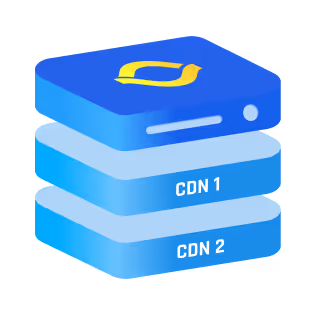You’ve probably hit a rate limit at some point. Maybe you were using an app, sending too many API requests, or just downloading something too fast—and boom, you got blocked or slowed down. That’s rate limiting in action.
Now imagine a smarter version of that—one that adjusts itself based on your behavior, usage, or network condition. That’s adaptive rate limiting, and it’s becoming the new normal in modern web systems.
What Is Adaptive Rate Limiting?
So here’s the basic idea. Regular rate limiting is a strict set of rules. Something like, "You can make 100 requests per minute, and that’s it." Doesn’t matter if you’re a bot, a casual user, or the world’s most loyal customer—you hit the limit, you get blocked or throttled.
Adaptive rate limiting is different. It adjusts based on context.
Let’s say you’re a new user browsing a site. You move slow, click around politely. The system lets you go. But if someone (or something) starts hammering the API with 1,000 requests per second, it kicks in with heavier restrictions. The limit is flexible. It learns. It adapts.
That’s the magic. You don’t just enforce a flat rule—you react to patterns.
Why Even Use Rate Limiting?
Before we go deep into the adaptive stuff, let’s quickly look at why rate limiting exists at all:
- To protect your system from abuse, DDoS attacks, or misbehaving scripts
- To manage costs, especially if you're paying per API call or server usage
- To ensure fair usage across all users
- To keep performance smooth when traffic suddenly spikes
Whether you're running an app or an API, a rate limiting service is your safety net. It keeps things under control so that no single user—or bot—can ruin the experience for others.
{{cool-component}}
What Makes Adaptive Rate Limiting Better?
Now you might ask: Why not just set a limit and call it a day?
Here’s why adaptive is better:
- It’s dynamic: Instead of one-size-fits-all, it reacts based on who’s making the request and how they behave.
- It’s fairer: Power users or known safe clients get more room to breathe. Suspicious actors get throttled fast.
- It’s efficient: Your system isn't wasting time or resources on micromanaging every user—it’s focusing on the risky ones.
Think of it like a bouncer at a club. A regular rate limiter checks ID and lets people in until the club is full. An adaptive one watches how you behave, and if you’re sketchy, you get kicked out—even if there’s still room.
Token Buckets, But Smarter
If you’ve played with rate limiting before, you’ve probably seen token bucket algorithms. They’re simple and powerful.
You get a "bucket" of tokens (say, 100). Each request costs one token. The bucket refills over time. If the bucket’s empty, requests get blocked or slowed.
Now, here’s where adaptive logic makes it better:
- Dynamic refill rates: Known-good users could get faster refill speeds.
- Behavior-based bucket size: The more consistent a user is over time, the bigger their token bucket becomes.
- Penalty mode: If someone hits a known abuse pattern (like scraping), their refill rate slows down for a while.
This way, your system is no longer just handing out tokens equally. It’s rewarding safe behavior and reacting to threats—without turning into a blunt instrument.
Key Rate Limiting Factors You Should Know
When setting up any kind of rate limiting, adaptive or not, you need to think about a few core things—the rate limiting factors.
Here are the ones you’ll almost always deal with:
- IP Address: The most basic one. Easy to spoof, but still useful.
- User ID or API Key: Good for authenticated systems.
- Geolocation: Sometimes people from a specific region get different treatment (for security or cost reasons).
- Behavioral Patterns: Are they making 5 requests per second or 500?
- Resource Type: Some endpoints might be more expensive than others.
Adaptive rate limiting takes these factors and puts them on steroids. Instead of relying on just one or two, it can combine many and adjust on the fly.
{{cool-component}}
How to Implement Rate Limiting (Step-by-Step)
Let’s say you’re building something and want to actually put this into action. You’re wondering how to implement rate limiting, especially adaptive.
Here’s a simplified way to do it:
1. Choose What to Limit
Decide what you’re limiting. Is it login attempts? API requests? File downloads?
2. Set a Baseline Rule
Start with a basic rule. For example: no more than 60 requests per minute per user.
3. Add Detection Logic
Track usage patterns. Is this user’s traffic consistent or suddenly spiky? Are they doing something unusual?
4. Adapt the Rule
Now adjust the limit dynamically. If the system sees abnormal behavior, reduce their limit or temporarily block them.
5. Add a Cooldown Mechanism
Instead of blocking forever, allow limits to reset after a short time. This is great for real users who just had a moment of over-clicking.
6. Monitor and Improve
Use logs and metrics to fine-tune the behavior over time. Watch out for false positives.
Real-Time Signals You Can Use for Adaptive Limits
If you want to build your own adaptive system—or tweak one you’re already using—you’ll need some kind of real-time signals to feed into it.
These are the behaviors or stats that tell your system: "Hey, something’s off. Let’s slow things down."
Here are a few practical ones:
- Burst patterns: Is a user going from 5 requests per minute to 500? That’s probably not normal.
- Time of day: Usage spikes might be okay during peak hours but not at 3AM from a single IP.
- Authentication level: Logged-in users or premium accounts might deserve looser limits than guests or trial accounts.
- Geographic origin: Sudden traffic from unusual regions might trigger tighter limits automatically.
- Error rates or latency: If your backend starts struggling, you can dial down limits temporarily to protect system health.
You don’t need a massive ML model to do this—just tracking these signals and setting flexible thresholds based on trends can make your limits feel intelligent.
Using a Rate Limiting Service
If you don’t want to reinvent the wheel, you can always use a rate limiting service. Many cloud providers or API gateways offer this as part of their stack. A few common tools:
- Cloudflare Rate Limiting
- Amazon API Gateway Throttling
- NGINX with Lua scripts or plugins
- Envoy Proxy or Kong Gateway
These tools often support adaptive behaviors out of the box or can be extended to do so.
Bonus tip: Most of them also help with network download rate limits, which is handy if you're hosting files or media.
{{cool-component}}
What About Download Limits?
Yup, network download rate limit is part of the conversation too. If you’re hosting files or letting people stream data, you can:
- Limit speed (e.g., 1MB/sec per user)
- Cap total downloads per day
- Use adaptive rules: faster downloads for verified users, slower for anonymous ones
This avoids server overload and makes sure everyone gets a fair share.
Caching vs Rate Limiting
Here’s something most devs don’t talk about: sometimes, you don’t need rate limiting at all. What you actually need is caching.
If someone’s requesting the same resource over and over (like an image, a blog post, or a GET API response), why rate limit them? Just serve it from cache and move on.
So how do you decide?
In most systems, you’ll want both:
- Use caching to reduce repeat load.
- Use adaptive rate limits to protect the stuff that can’t be cached (like logins, search queries, or user-specific data).
{{cool-component}}
Adaptive Rate Limits in Distributed Systems
Things get trickier when your system isn’t just one server anymore. If you’re running a distributed system with multiple instances, you’ve got new challenges:
- No shared memory: Server A doesn’t always know what Server B is doing, so rate tracking can be inconsistent.
- Race conditions: Two requests hit different servers at the same time, both get let in—because each server thinks it’s under the limit.
Here’s how to solve that:
- Centralized stores: Use something like Redis or Memcached to track rate data globally.
- Token syncing: Let each node periodically sync token counts or usage stats.
- Edge-first enforcement: In some systems (like CDNs), edge nodes can handle rate limits locally to reduce overhead and latency.
It takes a little extra planning, but it’s worth it—especially if you’re operating across regions or scaling fast.
Wrapping Up
It’s like giving your app the ability to say, “Chill out, I need a breather,” without shutting the door. It protects your backend, keeps your users happy, and lets your system breathe under pressure.
And you don’t need to be a wizard to set it up.
Just think about what matters most in your app. Start small. Watch the metrics. And grow from there.
Rate limiting doesn’t have to feel like punishment. With the right setup, it feels like balance.



.png)
.png)
.png)






